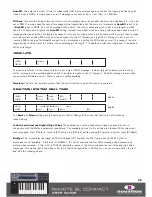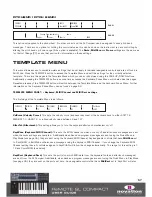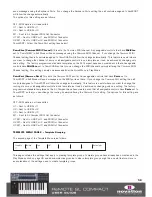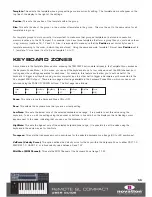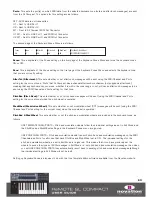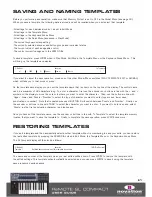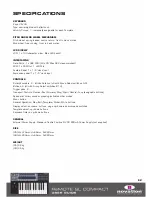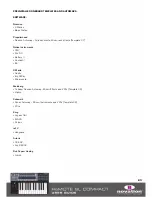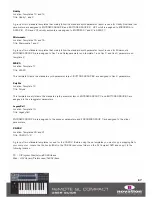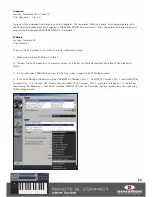
Many of the controls in the template are unassigned so that you can learn them to parameters in FL using the ‘Link to
controller…’ feature, accessed by right-clicking on a parameter. Some controls however are assigned to functions in FL
Studio, as follows:
GROUP A ENCODER 6 – pattern select
GROUP A ENCODER 7 – mixer channel select
GROUP A ENCODER 7 – sequencer channel select
GROUP B4 BUTTON 1 – metronome on/off
GROUP B4 BUTTON 2 – blend record on/off
GROUP B4 BUTTON 3 – loop record on/off
GROUP B4 BUTTON 4 – step editing mode on/off
GROUP B4 BUTTON 5 – loop time select
GROUP B4 BUTTON 6 – add marker
GROUP B4 BUTTON 7 – undo
GROUP B4 BUTTON 8 – shift
TRANSPORT BUTTONS – assigned as labelled
The controls that have no assigned function are set to send MIDI messages so that you can instantly learn them to
parameters in FL using the ‘Link to controller…’ feature. Simply right-click on a parameter and select ‘Link to controller…’ to
view the ‘Remote control settings’ for that parameter. Ensure ‘Auto detect’ is enabled and then operate the control on the
SL Compact that you want to assign to that parameter.
The controls available for learning to parameters in FL Studio work in different ways as follows:
GROUP A ENCODERS 1-5 – These are relative type controls with encoder acceleration. When you assign a
parameter to one of these controls, the parameter value will increase/decrease by 1 for every encoder step when
you rotate the control slowly. When you rotate it faster, the parameter value will increase/decrease by a larger
amount for every encoder step, meaning you can scale the full parameter range with a small quick rotation of the control.
ENCODERS GROUP B and C – These act as standard analogue rotary controls.
ENCODERS GROUP D – These are not set to send MIDI messages and FL Studio will not assign parameters to them
when they are operated.
GROUP B1 BUTTONS 1-4 – These are momentary or ‘hold’ buttons. If a parameter is assigned to these then it will
be turned on when the button is pressed and off when the button is released.
GROUP B1 BUTTONS 5-8 – These are two pairs of increment/decrement buttons. When you assign either button
in a pair to a parameter, the decrement button will decrease the parameter value by 1 step when pressed and the
increment button will increase it by one step when pressed.
BUTTONS GROUP B2 and B3 – These are switch-type buttons. When you assign a button to a parameter it will
cause the parameter value to go to minimum and maximum on alternate presses.
70
Summary of Contents for ReMOTE SL COMPACT
Page 1: ...FA000 01...

